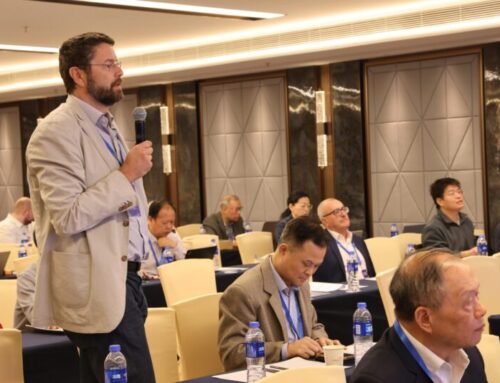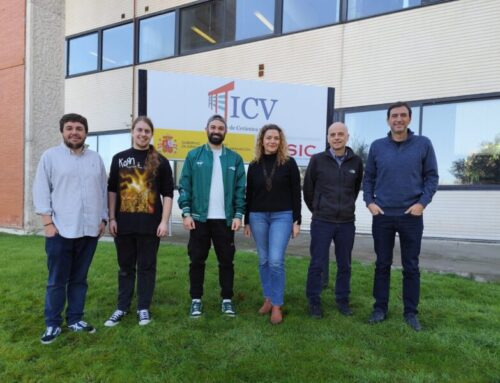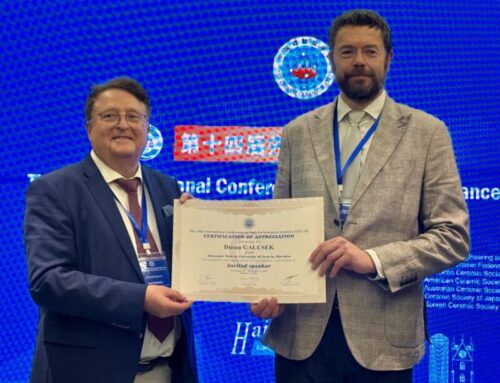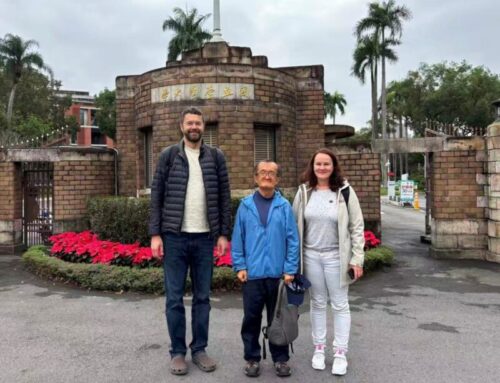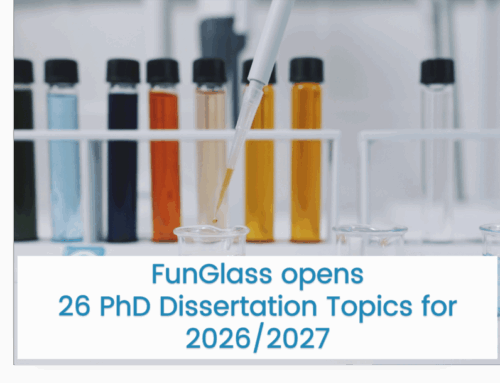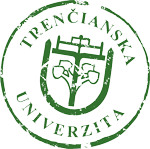New Research Projects from the Slovak Recovery Plan
We are pleased to announce that all FunGlass research projects submitted under the call Scholarships for excellent researchers R2-R4, and under the Capital booster for research and development schemes (the Slovak Recovery Plan), have been approved.
In addition, FunGlass has successfully secured funding for two projects under the call „Matching grants to resources obtained under the Horizon 2020 and Horizon Europe programme “.
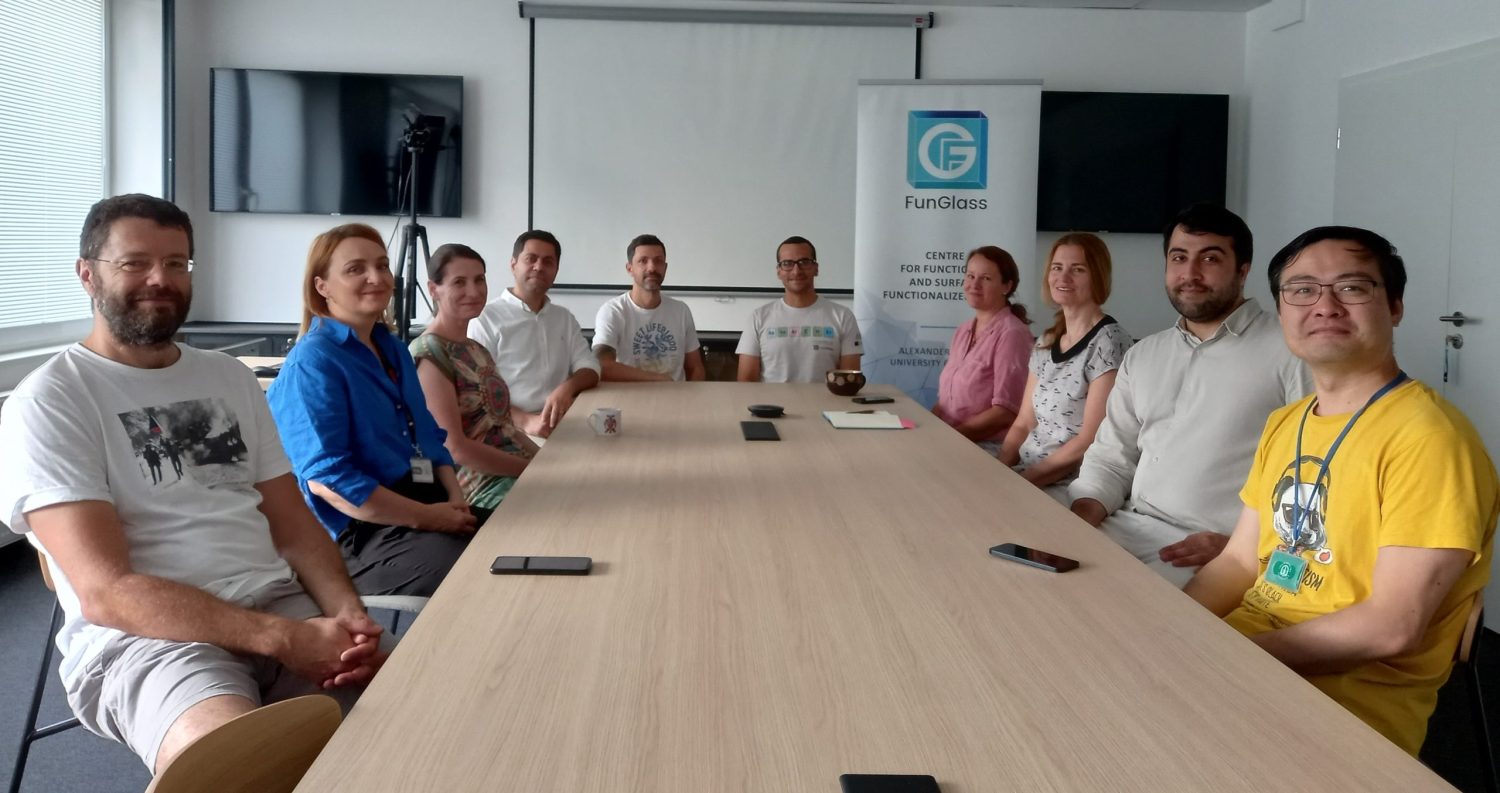
From left: Dušan Galusek, Hana Kaňková, Zuzana Neščáková, Ali Najafzadeh, Gustavo Galleani, German Clavijo Mejia, Monika Michálková, Dagmar Galusková, Orhan Sisman, Si Chen.
Amir Pakseresht, Ali Talimian, Ashokraja Chandrasekar, Nurshen Mutlu, and Monika Šandrejová (as administration support) are missing.
Congratulations to all principal investigators of the projects:
The overview of successful projects under Scholarships for excellent researchers R2-R4“
- 09I03-03-V04-00479 – Multi-technical fabrication of radiopaque bioactive glass coatings for biomedical applications, RADIOBIOCOATS, the author: Dr. German Clavijo, category of researcher: R2
The main goal of this RADIOBIOCOATS proposal is to analyze the optimal coating fabrication parameters and conditions of novel radiopaque bioactive glass deposits through a multi-technique approach to functionalize biomedical metallic devices. The result of this proposal will be the protocols for the optimization of radiopaque bioactive coatings fabrication with enhanced radiopacity, biocompatibility, and antibacterial properties through the most used techniques of metallic implant surface functionalization in the biomedical industry: Atmospheric plasma spray (APS), electrophoretic deposition (EPD), and sol-gel dip coating (SGDC).
- 09I03-03-V04-00484 – Hybrid breathing metal-organic-framework (MOF) glasses for indoor air quality, HyBreath Glass (HBG), the author: Dr. Orhan Sisman, category of researcher: R2
The main goal of this HyBreath Glass proposal is in addition to increasing environmental awareness of IAQ problems and environmental technologies, the HBG Project has two main scientific targets; to monitor and to transform CO2 with the novel hybrid MOF glasses by embedding functional electroactive compounds. To achieve these targets 3 main objectives and sub-objectives of the project will be followed: 1. Fabrication of pure ZIF-62 crystals and thermally stable electroactive functional complexes, 2. Fabrication of melt-quenched electroactive hybrid MOF glasses, 3. Demonstration of artificial breathing of HyBreath Glasses by CO2 sensing and reduction.
- 09I03-03-V04-00482 – Development of luminescent oxide glasses as potential material for multifunctional magneto-optical thermometer, Multifunctional MO glasses, the author: Dr. Gustavo Galleani, category of researcher: R2
At the outset, the research program proposes to contribute to the advancement of specialty glass materials. The research objectives are to develop new multifunctional magneto-optical glasses capable of serving as self-calibrated contactless luminescent thermometers while also exhibiting magnetic behavior. These glasses can be individually used or combined to function as magnetic field sensors and/or as luminescent thermometers, as well as faraday rotating elements. On a broader and longer-term perspective, this proposal therefore aims at fostering research creativity, innovation, and excellence in specialty multi-functional glass materials, with strong potential for knowledge creation and transformative innovation.
- 09I03-03-V04-00480 – Innovative Bilayer Coatings for Degradable Implant Applications: Synergistic effect of PEO and Sol-gel coatings on magnesium alloys, SynBioDe-Mag, the author: Dr. Ashokraja Chandrasekar, category of researcher: R2
The overarching objective of this proposal is to address the significant issues related to the development of bilayer coatings on magnesium and its alloys, specifically for utilization in degradable implant applications. To attain the overarching goal, the project will concentrate on three distinct levels, referred to as specific objectives. The primary objective of this research is to investigate the individual impacts of coatings on pure magnesium and its alloys (AZ31B and WE43B) i.e., PEO-derived oxide layers in terms of corrosion resistance under physiological conditions and sol-gel coatings in terms of bioactivity and biocompatibility. The second objective of this study is to assess the synergistic impact of bilayer coatings on magnesium (Mg) and its alloys in terms of controlled degradability. Finally, the bilayer coatings that demonstrate the highest performance on the chosen alloys or pure metals will be evaluated using cell lines to verify their impact on cell growth and cytotoxicity.
- 09I03-03-V04-00487 – Mesoporous bioactive glasses in hybrid matrixes: Functionalized 3D-printed Smart Scaffolds, HYBRIDBONE, the author: Dr. Nurshen Mutlu, category of researcher: R2
The primary objective of this proposal is to develop multifunctional biomaterial inks tailored for applications in bone tissue engineering. This will be achieved through a methodical exploration of various design parameters, leading to the preparation of composite inks with novel viscoelastic and biological properties. These distinct properties will arise from the incorporation of mesoporous bioactive glasses (MBGs), which encompass diverse biologically active metallic ions, proteins, and growth factors. Within the composite inks, MBG particles of varying sizes and chemical compositions will be embedded within an enzymatically crosslinked porous Gelatin/Hyaluronic Acid (GEL/HA) matrix that closely mimics the extracellular matrix.
Equally, we are pleased with the successful projects from this call, of our colleagues from IIC SAS, working in the centre FunGlass:
- Dr. Monika Michálková with project Development of advanced luminescent glass 3D structures, LumiPiG, category of researcher: R3
The project’s primary goal is to develop a new generation of luminescent phosphor-in-glass (PiG) optoelectronic materials with high efficiency, low-cost fabrication (3D printing), and tailored luminescence properties. Additive manufacturing will enable the combination of mutually supporting phosphors in different layers within a single glass matrix, thus improving the optical properties of the final material. In addition, the phosphors used for additive manufacturing will be prepared in spherical shapes – microspheres that can be solid or hollow – to enhance the efficiency of the phosphor further.
- Dr. Ali Najafzadehkhoee with project Design, analysis and mechanical characterization of laminar ceramics, Laminar ceramics/LaCer, category of researcher: R2
The overall objective of the research project is to understand the physics of stress build-up and materials response to sharp contact. This knowledge will provide a science-based foundation to develop new ceramics with improved resistance to surface damage, thereby enabling the fabrication of laminar ceramics with improved mechanical performance, such as their resistance to initiation of crack upon sharp contact, the R-curve behavior, and apparent fracture toughness.
The overview of the successful projects under the Capital booster for research and development support schemes:
- 09I03-03-V06-00041 project to APVV 22-0062 Reference glasses for analysis of strategic raw materials
Principal investigator: Dr. Dagmar Galusková
- 09I03-03-V06-00042 project to APVV 22-0036 3D bioactive glass scaffold mimicking natural bone with therapeutic effects for bone tissue applications
Principal Investigator: Dr. Si Chen
- 09I03-03-V06-00061 project to APVV 22-0070 Synthesis and developing of high entropy oxide ceramic for thermal barrier application
Principal Investigator: Assoc. Prof. Amirhossein Pakseresht
The overview of the succesful projects under the „Matching grants to resources obtained under the Horizont 2020 and Horizont Europe programme“:
- 09I01-03-V04-00040 – The linking chemical and biological analyzes in the development of 3D biomaterial structures as an extension of the research area defined in the original Horizont programme project FunGlass
Principal Investigator: Dr. Hana Kaňková, Dr. Zuzana Neščáková
- 09I01-03-V04-00014 – The development of scratch-resistant oxide glasses using artificial intelligence/machine learning modeling methods as a complementary research project to the original Horizont programme project GlaCerHub.
Principal Investigator: Dr. Ali Talimian
A few more projects proposal are still under evaluation. Fingers crossed.


